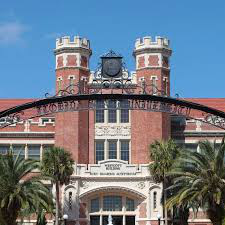Speaker
Description
The dynamics of photoproduced baryonic systems has lacked clear understanding, due to the absence of both precise data and of theoretical attention. Using data collected in Hall D of the Thomas Jefferson National Accelerator Facility, we have for the first time studied the reaction mechanisms of the photoproduced baryon-antibaryon pairs $\gamma p \to \mathcal{\overline{B}B}$$p$, where $\mathcal{\overline{B}B}$ includes $\overline{p}p$ and $\overline{\Lambda}\Lambda$ (with $\Lambda \to \pi^- p, \overline{\Lambda} \to \pi^+ \overline{p}$) with photon beam energy from reaction thresholds up to 11.4 GeV. Several distinct reaction mechanisms producing $p\bar{p}$, $\Lambda\bar{\Lambda}$ and $p\bar{\Lambda}$ systems have been identified using realistic Monte Carlo models that were matched to the measured kinematic observables seen in the experiments. The interactions in these baryonic systems were studied using (so far preliminary) differential cross-sections, invariant mass, and three-body angular correlation measurements. Preliminary total cross-sections of different reactions will also be compared. In addition, preliminary measurement of hyperon polarization, spin correlation, and beam asymmetries extracted from the GlueX photon energy range between 8.2 and 8.8 GeV will be presented.
| speaker affiliation | Carnegie Mellon University, [GlueX Collaboration] |
|---|

